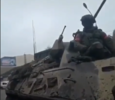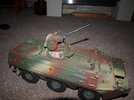GerryW
Rest In Peace
Ok, so I might be opening a can of worms here, but it's crossed my mind when attacking/weathering kits.
Given that WW2 lasted roughly 6 years, in that time a lot of innovation/r&d/upgrades took place, plus attrition on the battlefield/air strikes/partisan activities, just how long would a vehicle last?
Next question, how rusty and worn would that vehicle be after being used and abused for 12 months?
Why am I putting faded paint effects and rusty metal on a sub 52 week old vehicle?
Given that WW2 lasted roughly 6 years, in that time a lot of innovation/r&d/upgrades took place, plus attrition on the battlefield/air strikes/partisan activities, just how long would a vehicle last?
Next question, how rusty and worn would that vehicle be after being used and abused for 12 months?
Why am I putting faded paint effects and rusty metal on a sub 52 week old vehicle?









